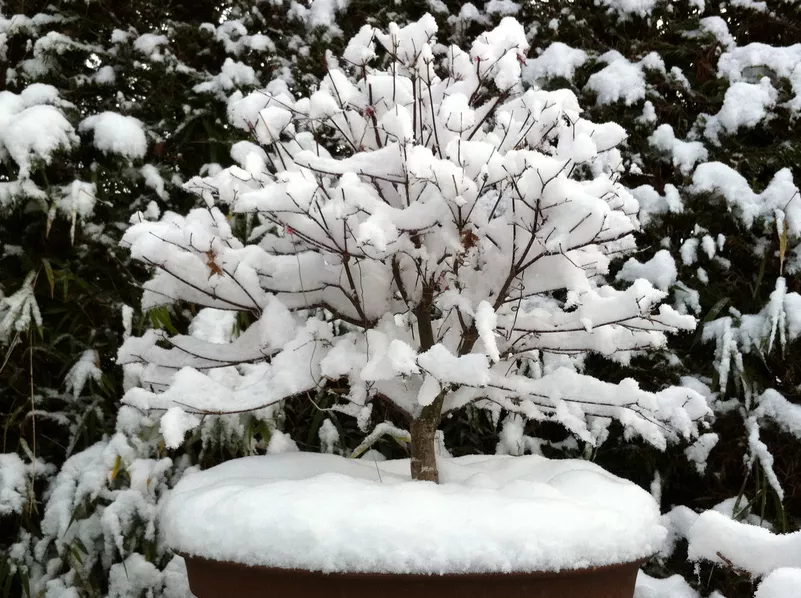In autumn, the Japanese maple shows veritable cascades of bright red, orange or yellow colors when the filigree, formerly summer-green foliage turns into a wide variety of tones. The tree then sheds its foliage to go into its well-deserved hibernation. Japanese maple (Acer palmatum) is particularly popular. Just like specimens planted out, Japanese maples cultivated in tubs are also hardy, but the latter need good root protection.
 Although the Japanese maple is hardy, the roots should be protected in the bucket
Although the Japanese maple is hardy, the roots should be protected in the bucket
Japanese maple is used to cold winters
The Japanese maple originally comes from the cold mountain regions of Japan, where it is widespread, especially on the islands of Honshu and Hokkaido. The climate there is not entirely dissimilar to that of central Europe: the summers are quite short and warm, while the winters are long and cold. Ergo, the Japanese maple is already used to winter climatic adversity by nature and is therefore considered to be quite hardy even in our latitudes.
Protect roots in pots
While Japanese maples that are planted out usually do not need extra winter protection, you should protect potted specimens very well. Since their roots are not in solid soil, but are only shielded from the cold by a thin layer of substrate and the material of the planter, they are quite vulnerable and threaten to freeze to death in cold winters. However, this threat can be countered by
- the bucket is placed in a sheltered and bright location
- a heat-emitting house wall or brick wall, for example, is ideal
- where drafts should be avoided
- the bucket placed on an insulating base (e.g. styrofoam).
- and wrapped with a fleece or something similar.
- the substrate is covered with spruce branches.
Don't forget to water, even in winter
In addition, Japanese maple should also be watered from time to time in winter, but only on frost-free days. If the substrate is frozen due to frosty temperatures, the water does not reach the roots and can also damage them. Therefore, only water when it is comparatively mild and the weather is rather dry. Further care measures are not to be observed in winter.
tips
Japanese maples sprout comparatively early, although you should protect the delicate foliage in April and May from the threat of late frosts, for example with a fleece cover.